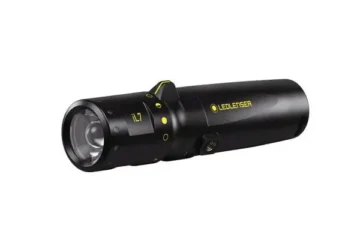Selecting the right ATEX equipment is critical for ensuring safety in environments where explosive atmospheres are a risk. Different industries face unique hazards, so understanding how to choose the appropriate ATEX-certified equipment can significantly reduce the risk of explosions, ensuring both regulatory compliance and the safety of personnel and operations.
1. Understand the ATEX Zones in Your Workplace
ATEX equipment is designed for specific zones, each reflecting the likelihood and duration of explosive atmospheres in the area:
- Zone 0 (Gas) / Zone 20 (Dust): Constant or long-term presence of explosive gases or dust. Equipment here must have the highest safety level, often using intrinsically safe designs or explosion-proof enclosures.
- Zone 1 (Gas) / Zone 21 (Dust): Explosive atmospheres are likely to occur occasionally under normal operating conditions. Equipment must be suitable for frequent exposure to hazardous conditions.
- Zone 2 (Gas) / Zone 22 (Dust): Explosive atmospheres are unlikely or present only for short periods. This zone allows for equipment with a slightly lower level of protection compared to Zones 0 and 1.
Before choosing ATEX equipment, perform a risk assessment of your workplace and identify which zones apply. This ensures that you select equipment rated for the specific hazardous environment in which it will be used.
2. Consider Your Industry’s Specific Hazards
Different industries pose distinct types of risks. Understanding the hazards specific to your industry will help in selecting the most appropriate ATEX equipment.
- Oil & Gas: Equipment in this sector often faces high risks from flammable gases and vapors. Look for explosion-proof or flameproof equipment that can withstand these hazards, such as ATEX-certified motors, valves, or lighting systems.
- Chemical Processing: Chemical plants are prone to both gases and dust explosions. Intrinsically safe instruments, ATEX-rated pumps, and explosion-proof lighting are vital for mitigating risks.
- Mining: Explosive dust, gases, and underground operations create significant hazards. ATEX-certified equipment for mining often focuses on ensuring low energy output to prevent igniting combustible materials.
- Pharmaceuticals: Fine dust and powders used in manufacturing can be combustible. ATEX-compliant HVAC systems, vacuum pumps, and electrical equipment are key for maintaining safety.
3. Match Equipment to Gas Groups and Temperature Classes
ATEX certification divides explosive atmospheres into gas groups and temperature classes:
- Gas Groups:
- Group IIA (less easily ignited gases like propane)
- Group IIB (medium flammability gases like ethylene)
- Group IIC (highly flammable gases like hydrogen and acetylene)
- Temperature Classes: The maximum surface temperature that equipment can reach without igniting the surrounding atmosphere is another critical factor. Classes range from T1 (450°C) to T6 (85°C). Ensure the equipment’s temperature class does not exceed the ignition temperature of the gas or dust in your environment.
4. Ensure Compatibility with Existing Systems
When selecting ATEX equipment, consider how it will integrate with your current systems. For instance, explosion-proof lighting or intrinsically safe instruments should seamlessly connect with existing electrical networks. Equipment like ATEX-certified motors and HVAC systems should be compatible with your facility’s infrastructure to avoid unnecessary downtime or modifications.
5. Look for Third-Party Certification and Compliance
Ensure that the ATEX equipment you choose is certified by a recognized third-party testing body, such as UL, TÜV, or Intertek. Third-party certification offers peace of mind that the equipment has undergone rigorous testing and meets ATEX standards.
Also, verify that the equipment complies with Directive 2014/34/EU, the most recent ATEX directive governing the use of equipment in potentially explosive atmospheres.
6. Prioritize Maintenance and Durability
Regular maintenance is critical to keeping ATEX equipment functioning correctly. Choose equipment that is built for long-term durability and easy maintenance. Equipment made from corrosion-resistant materials or with self-diagnostics capabilities can reduce long-term costs and improve safety.
7. Get Expert Guidance
Choosing the right ATEX equipment often requires detailed knowledge of both the specific equipment and the regulatory landscape. Consulting with ATEX-certified suppliers or industry professionals can help you make informed decisions. They can recommend the best products suited to your environment, assist in performing risk assessments, and guide you through compliance requirements.
By selecting the right ATEX equipment tailored to your industry’s specific needs and ensuring compliance with the correct ATEX zones, gas groups, and temperature classes, you can significantly enhance safety and reduce the risk of accidents. Prioritizing durable, certified products will ensure that your operations remain efficient, safe, and compliant with the latest regulations



0 Comments